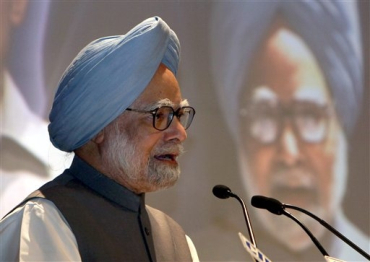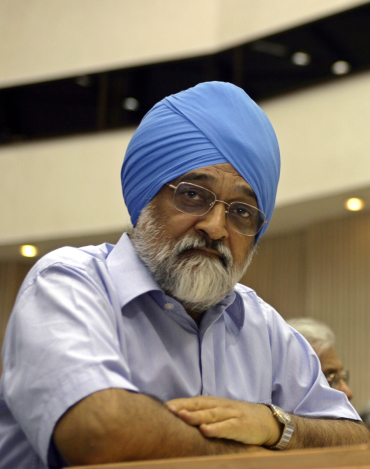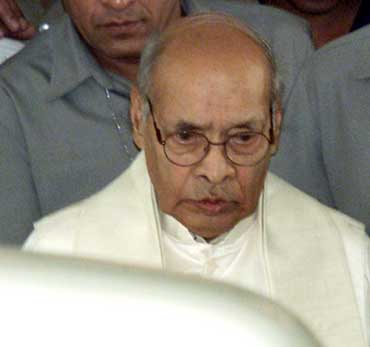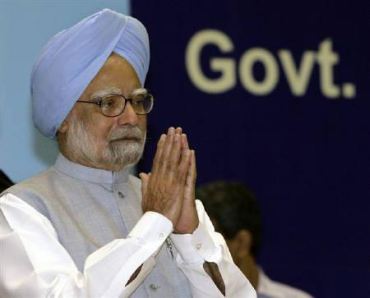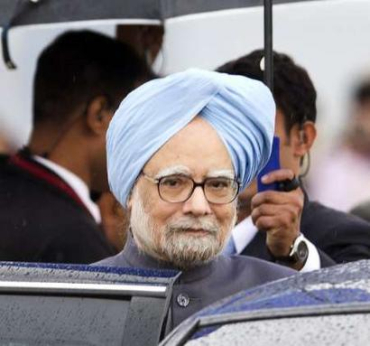 | « Back to article | Print this article |
Manmohan Singh: Reformist FM to weak PM
Why is Manmohan Singh the finance minister a big hit and Manmohan Singh the prime minister has, by and large, failed to live up to the reputation he had built 20 years ago?
In 1991, he had presented a Budget and taken several landmark decisions that bailed the country out of a grave balance of payments crisis and gave India's economic policies a new direction - a trajectory all finance ministers succeeding him followed without any significant deviation and in the process ensured higher growth for the economy.
Admittedly, Singh is conscious of the formidable reputation he had acquired for himself in the early 1990s.
Click NEXT to read more...
Manmohan Singh: Reformist FM to weak PM
It is, therefore, ironic that in spite of his own awareness of the high level of expectations, his record in furthering economic reforms as prime minister falls far short of what he had achieved as finance minister.
What could be the reasons for the gap between his effectiveness as finance minister then and as prime minister now?
Click NEXT to read more...
Manmohan Singh: Reformist FM to weak PM
In less than a year of being appointed as finance minister, he put in place a new team in charge of the key departments in the finance ministry.
This meant a new finance secretary, a new economic affairs secretary, a new revenue secretary and even a new consultant in lieu of the chief economic advisor.
This also meant the departure of Sriranga Purushottam Shukla, Prateep Lahiri and Deepak Nayyar from the ministry and the entry of new faces like Montek Singh Ahluwalia, M R Sivaraman and Ashok Desai.
Click NEXT to read more...
Manmohan Singh: Reformist FM to weak PM
In addition to the political support he got from P V Narasimha Rao, who was the prime minister at the time, this freedom certainly enhanced Singh's effectiveness as finance minister.
Looking back at Singh's seven years as prime minister, a pertinent question would be whether he enjoyed the same freedom to pick his team as he did while putting together the team of top secretaries in the finance ministry in 1990s.
Click NEXT to read more...
Manmohan Singh: Reformist FM to weak PM
Even the induction of Montek Singh Ahluwalia as deputy chairperson of the Planning Commission had to go through the arduous process of obtaining the concurrence of the Left, which supported the United Progressive Alliance government in its first term.
Similarly, Singh had to submit to the Congress party's wishes on his choice of ministerial colleagues.
In the UPA's second term, Singh accepted Pranab Mukherjee as finance minister, even though many in the Congress party believed that the prime minister had someone else in mind for that job.
Click NEXT to read more...
Manmohan Singh: Reformist FM to weak PM
If Singh has failed to create similar excitement over sustained economic reforms in the past seven years (and nobody should argue that the country's need for more deep-rooted economic reforms is over), one of the reasons is his failure to put in place a strong and effective ministerial team.
This is where a major shortcoming in his leadership skills shows up, particularly when his tenure as prime minister comes up for comparison with that of P V Narasimha Rao.
Click NEXT to read more...
Manmohan Singh: Reformist FM to weak PM
This was an unusual move.
Singh may have similar perspicacity and foresight, but he has little freedom to choose his key economic ministers.
True, Rao's Cabinet was said to consist of only one and a half reformers, but they were his men as long as they were there and were largely free to act.
Click NEXT to read more...
Manmohan Singh: Reformist FM to weak PM
In comparison, Singh does not give the impression of being a completely free agent.
He does not even seem to have the liberty of choosing non-politicians or economists as his finance minister.
This is a key factor that has made a difference to governance, formulation of economic policies and their implementation, compared to 20 years ago.
This is also why Manmohan Singh the prime minister may not succeed as well as Manmohan Singh the finance minister did.
